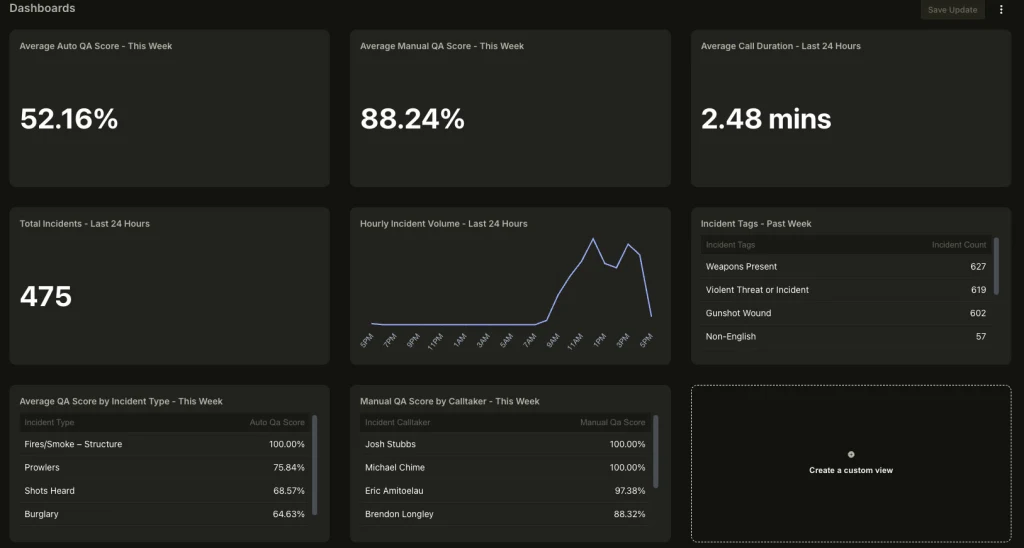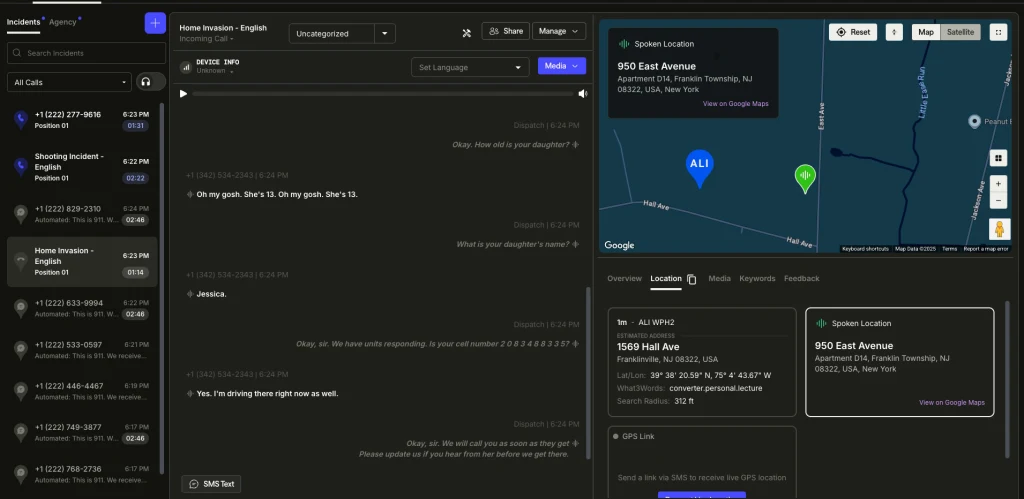It’s become commonplace to message someone a photo, text them an address, and switch to a video chat all in the middle of a phone call.
But 911 systems, largely designed for the era of landlines, don’t typically allow for those luxuries, even when callers are trying to communicate address information from a noisy environment or share a photo of an ongoing emergency.
A startup called Prepared is working to change that, helping emergency call takers communicate more efficiently with people in situations where every second matters by enabling text, photo, and video communication and providing AI tools to transcribe and even translate conversations in real time.
Cofounder and CEO Michael Chime says he had initially focused on providing an app to help schools during emergencies, having grown up near to a school shooting. During the COVID pandemic, when schools were closed, he communicated with school districts about additional features they might want, and several mentioned difficulty sharing detailed data with 911 centers during an emergency.
The company then began to focus on technology allowing livestreaming video to 911 centers and has since expanded to add additional AI-powered features like transcription and live translation. Already, the technology is being used by more than 1,000 emergency call centers—known as public-safety access points, or PSAPs—around the country, including those serving Las Vegas, Nashville, and Baltimore. And the company just announced a new $80 million Series C funding round, led by General Catalyst with participation from Andreessen Horowitz and First Round Capital, bringing their total funding to $125 million.
“Our mission is to make sure every emergency gets the best possible response,” Chime says.
One challenge facing the agencies that handle emergency calls is that while call volume continues to grow in many locations, staffing often doesn’t rise to match it. Prepared’s technology is designed to help call takers handle calls faster and more accurately, getting correct data to dispatchers who in turn send firefighters, police, EMTs, or other responders to emergencies.

“It takes a tremendous amount of multitasking,” Chime says. “They have to listen, give thoughtful responses, make sure you feel good and safe, while also collecting all the key details.”
Prepared generates automated summaries, which can be visible to both call takers and dispatchers, automatically highlighting key information like addresses and descriptions of people or vehicles involved in an incident. And transcripts can also help call takers verify they heard everything correctly—even on a noisy line—and let them quickly ensure that they’ve gathered all required information before ending the call.
Prepared’s technology is easy to integrate into existing workflows, letting call takers see the platform’s information alongside their existing software tools. And call centers can easily have their phone systems duplicate calls to Prepared’s system for processing without disturbing their existing routing configurations.
“I actually think it’s helping with our retention too,” says Kari Morrissey, director, emergency communications for Anoka County, Minnesota. “Because there’s a lot to learn as a new telecommunicator.”
The AI can also help prompt call takers to make sure to ask specific questions and otherwise follow specified protocols even in stressful situations. If call centers desire, the AI can also help in quality assurance reviews after the fact, highlighting correct protocol and any areas for improvement.

Prepared’s software can also transcribe emergency radio communications, helpful to dispatchers who are often required to monitor multiple radio channels at once.
And automatic translation can dramatically cut response times for callers speaking a language not known to call center workers. Instead of trying to identify the language and conference in an appropriate interpreter, call takers can see an automated translation of what they’re hearing and often type in a response, which will be translated back to be read aloud or texted to the caller. That also makes it easy for call takers to simply copy-and-paste typical questions to be translated, though Prepared is working on direct speech translation as well.

A call that could take 15 minutes, including connecting with an interpreter, can be processed in just three or four minutes with Prepared’s translation in place, says Anthony Mignogna, chief of communications and 911 coordinator for the Delaware County Department of Emergency Services in Pennsylvania.
“It really covers that hurdle—that gap—that we have with the legacy system,” he says.
The system also helps gather health data from callers’ phones if they have the opt-in Medical ID feature on their smartphones, which can automatically route health data to 911 call centers, enabled. And it cleanly highlights caller locations on a map for call takers to see, helping to ease a traditional hurdle of getting accurate location information from callers, Mignogna says.
“We get a lot of supplemental data just by somebody dialing 911, which you wouldn’t get on that traditional 911 phone call,” he says.
Prepared also enables emergency call centers to receive texts—helpful in situations where people can’t speak for safety or medical reasons—and to send texts to callers, requesting more information or including links that let callers send photos or stream video of their surroundings to help emergency responders understand the situation.
Prepared’s technology can even potentially handle some calls to nonemergency lines on its own, with the AI system collecting information and generating a transcript that can be quickly reviewed by human staff. One human can review multiple calls at once, jumping in if there’s an issue, and the AI can automatically reroute calls describing a potential emergency like chest pain to 911.
But Chime says the company has no plans to replace human call takers altogether, instead using AI to enhance their ability to handle emergency calls.
“Humans have limitations, like I haven’t met anybody who speaks 30 languages,” Chime says. “But the technology can empower them to do that.”
Accedi per aggiungere un commento
Altri post in questo gruppo


“Fuck around” and “find out,” read a TikTok post that followed a screenshot announcing that California is suing President Donald Trump for deploying

It’s 2009. Everyone is rocking ankle socks. “TikTok,” is just a Ke$ha song. You pull out your BlackBerry Bold 9700 and update your BlackBerry Messenger (BBM) status. All is well.
Before

Voyager Technologies raised $382.8 million in its U.S. initial public offering, the space and defense tech company said on Tuesday, amid a

Need help sparking conversation on Hinge? Esther Perel has some questions for you.
The renowned ps


Databricks, known for secure data storage and AI, has launched a new AI business intelligence dashboard
